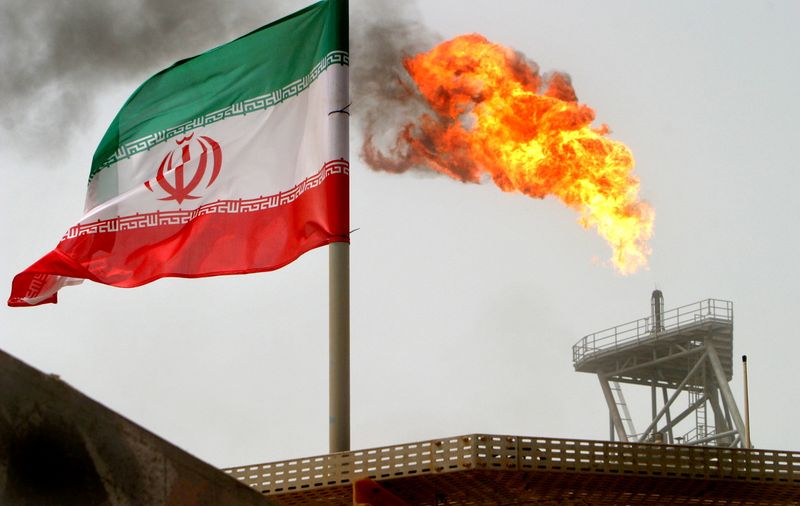Iran has increased oil exports despite sanctions
2023.01.15 08:40

Iran has increased oil exports despite sanctions
By Ray Johnson
Budrigannews.com – Companies that track the flows say that despite U.S. sanctions, Iranian oil exports hit new highs in the last two months of 2022 and are starting the year strong, with more shipments going to China and Venezuela.
Since former U.S. President Donald Trump walked out of a 2015 nuclear agreement in 2018 and reimposed sanctions aimed at reducing oil exports and the revenue they bring to Iran’s government, Tehran’s oil exports have decreased.
According to some estimates, exports reached their highest level since 2019 during President Joe Biden’s term, when he tried to revive the nuclear deal. This is the case in spite of obstacles like a stalled negotiation and competition from discounted Russian crude.
Iran’s crude exports in December, according to energy consultant SVB International, averaged 1.137 million barrels per day, up 42,000 bpd from November and the highest figure SVB has reported based on earlier estimates for 2022.
Sara Vakhshouri of SVB stated, “There hasn’t been any serious crackdown or action against Iran’s oil exports in comparison to the Trump administration.” So far, January exports were strong, similar to previous months.”
“Russia’s supply to China and lower Chinese demand have been a significant obstacle for them.” China continues to receive the majority of its oil. Additionally, Iran aids Venezuela in exporting its oil.
“Iran’s macroeconomic figures clearly bear this out,” said White House National Security Council spokesperson Adrienne Watson of the administration’s robust enforcement of the sanctions.
According to Watson, “We have not hesitated and will not hesitate to take action against sanctions evaders,” as well as sanctions against Iran’s missile and drone trade and violations of the Iranian people’s human rights. An oil smuggling ring with ties to Iran’s Islamic Revolutionary Guards Corps (IRGC) was subjected to sanctions by the Treasury Department late last year.
Oil supply monitoring consultant Petro-Logistics reported that Iranian crude exports were also rising in December, reaching their highest level since March 2019.
Iranian crude exports were estimated by data intelligence firm Kpler to be 1.23 million barrels per day in November, which was the highest level since August 2022 and nearly on par with April 2019’s rate of 1.27 million barrels per day. However, in December, they fell to just below 1 million barrels per day.
A request for information regarding exports was not answered by the Iranian oil ministry. The semi-official Fars news agency reported this week that shipments of 1.4 million barrels per day are the foundation for Iran’s draft state budget.
Iran’s biggest customer is China. According to analysts such as FGE, the majority of Iran’s crude exports to China are disguised as crude from other nations in order to evade sanctions. Iran has claimed that documents were forged to conceal the origin of Iranian cargoes in the past.
Additionally, Iran’s involvement in Venezuela, which is also subject to sanctions from the United States, has grown over the past year, supplying diluents and light oil for refinement and exportable crude grades.
Estimates of Iranian oil exports frequently range widely and there is no definitive figure. The flows are tracked by tanker tracking companies using satellite data, port loading data, and human intelligence. In most cases, Iran does not publish figures.
Vortexa, a different analyst, says that China imported 1.2 million barrels per day of Iranian oil in December, a new record, up 130% from the previous year.
According to the statement made by the company, “Most of these shipments found home in Shandong, where independent refiners have turned to discounted grades since the second half of 2022 amid sluggish domestic demand and depressed refining margins.”
In response to a request for comment, the Chinese Foreign Ministry’s press department stated: Without directly responding to Reuters’ inquiry regarding China’s record-breaking purchases of Iranian oil, he stated, “The legitimate and reasonable cooperation between China and Iran under the international legal framework deserves respect and protection.”
According to Vortexa, supply of Russian Urals, Iran’s primary rival grade, decreased in December due to buyer uncertainty caused by a price cap on Russian crude exports and a ban by the European Union.
Iran would be able to increase sales to former buyers like Europe and South Korea if the nuclear deal was revived.
Still, talks have been at a standstill since September, and in November, Washington’s special envoy for Iran stated that Tehran’s crackdown on anti-government protesters and the sale of drones to Russia had diverted Washington’s attention away from the agreement.
According to tanker trackers, Iran’s crude exports decreased from over 2.5 million bpd in 2018 to as little as 100,000 bpd at times in 2020 following Trump’s reimposition of sanctions and withdrawal from the nuclear deal.
More Oil prices reduced losses and closed the second week with growth








